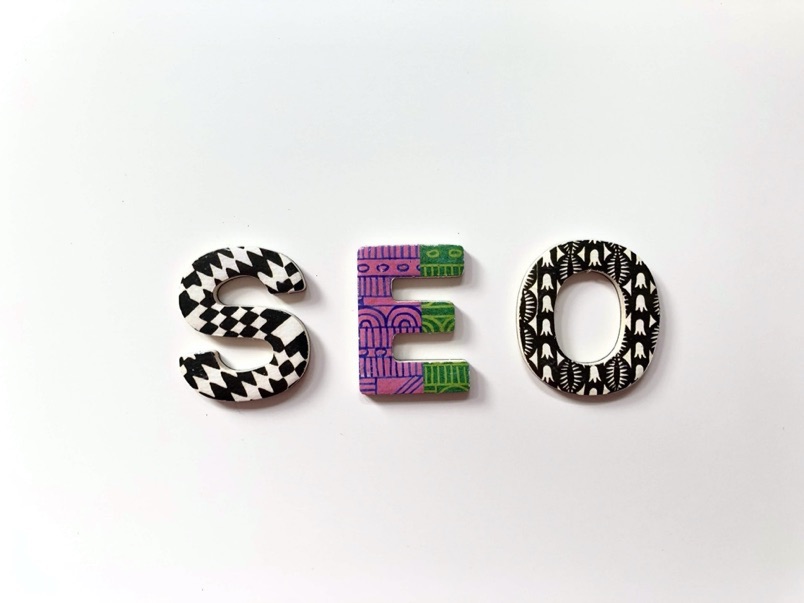How do you measure the return on investment (ROI) of your SEO campaign?
This is one of the toughest marketing questions.
But this article will break down all the complexities that surround this question.
Many companies have this one BIG issue with SEO:
They can’t figure if they are losing or making money from their SEO campaigns.
Do you know what these companies do?
They rather spend their marketing dollars on paid search because it allows them to track their ROI easily.
But that’s a big mistake.
What these companies (including you) may not know is that SEO provides the best long-term results.
SEO will continue to drive revenue for months after the campaign has ended.
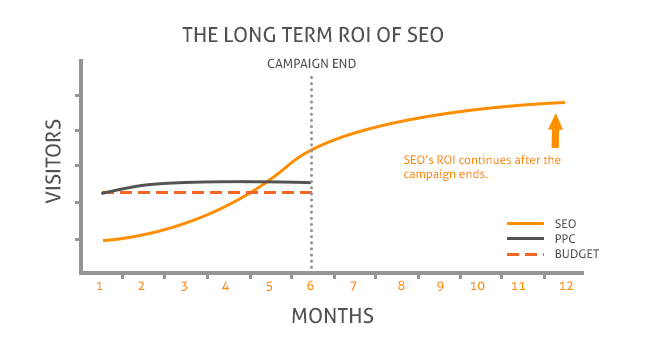
Sam McRoberts is one of my marketing mentors.
McRoberts strongly believes that anyone who wants great returns from SEO should invest in it like Warren Buffett invest in stocks.
“If you pick a bad set of stocks, you might lose money. If you sell the stocks too late, you might lose money. If you sell too early, you might lose money or even leave money on the table. You have to pick good stocks and hold them for just the right amount of time, just as you have to pick the right keywords and target them for the right amount of time.
You simply can’t approach SEO with a short-term investment mentality. If you’re looking for a quick hold-and-flip, that isn’t SEO. If you want to know with some measure of statistical certainty what your ROI will be over the next quarter or year, that isn’t SEO. If on the other hand you’re willing to invest for the long-term, if you have a long-term vision and you’re willing to do whatever it takes to reach your end goal…that’s SEO.” – Sam McRoberts
I want to make this very clear before we proceed:
If you’re looking to generate ROI within a quarter or six months, then SEO is not the perfect marketing strategy for you.
But if your goal is to dominate your entire niche and become the market leader within the next two years, then SEO is for you.
The amazing thing about SEO is that it has the power to affect each stage of the buying cycle.
So back to our question:
How can you measure the ROI of your SEO campaign?
Most people measure the ROI of their SEO campaign in actual dollars, which I think is very wrong.
I don’t mean it’s bad calculating your SEO ROI in dollars.
Before you do that, there are some metrics you have to track.
Your SEO ROI should never be measured by one metric alone like revenue.
Because of the complexity of SEO, you’ll need to rely on the combination of 11 key metrics.
1. An Increase In Non-Branded Organic Search Traffic
There are two kinds of keywords:
- Branded keywords
- Non-Branded keywords
Branded keywords are those phrases that contain a brand name or some variation of it.
Search users who type in branded keywords are already familiar with the brand within the keyword.
For example, when someone types the keyword “Michael Kors Lexington Watch” it indicates this person is already familiar with the Michael Kors brand.
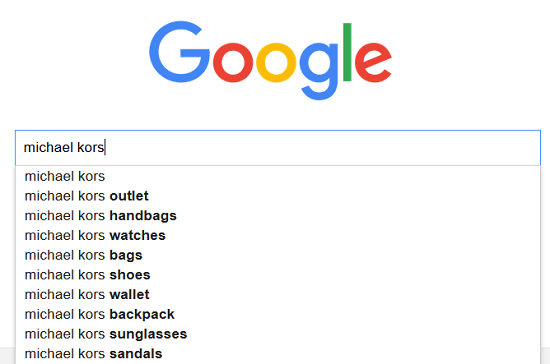
Searchers who use branded keywords already have a brand or product in mind.
On the other hand, is non-branded keywords.
A non-branded keyword doesn’t contain any website, brand name, or some variation like a misspelling.
For example, when someone types the keyword “watches for men” or “best watches for men” into Google, it indicates that they don’t have any brand in mind, and just still in the research stage.
One of the goals of your SEO campaign is to increase your brand exposure to people who are typing those non-branded keywords that are related to your business.
Unfortunately, in 2013, Google stopped providing us with keyword data.
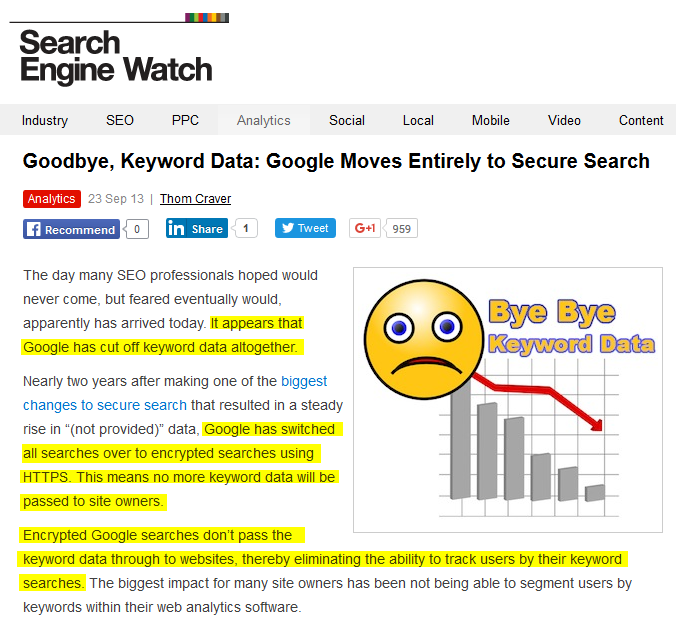
This development means you can’t track exactly what branded and non-branded keywords are driving the most traffic to your web pages.
But there’s good news:
You can still remove branded keywords from your organic search traffic report in Google Analytics.
(I assume that you’ve already installed Google Analytics on your website).
Inside your Google Analytics dashboard, you’ll see a link on the left side that says Acquisition.
Click “Campaigns.”
Click “Organic Keywords.”
To remove branded keywords from your “Organic Traffic” report, click “Advanced.”
You’ll see something like below.
Select “Exclude” and type in your branded keywords in the white box.
If traffic from your non-branded organic search is rising, it shows your SEO campaign is moving in the right direction.
2. An Increase In Branded Organic Search Traffic
Don’t get confused yet.
This may sound like the opposite of #1, but it’s not.
It’s very important that you’re tracking your branded organic search traffic too.
It’s the only way to know if your SEO campaign is moving your brand in the right direction.
Like I said earlier, SEO affects each stage of the buying cycle.
Here’s how:
If someone discovers your brand through a non-branded organic keyword search, it means they have now come in contact with your brand.
In fact, you can conclude that they are now familiar with your brand.
Someone who discovered your brand through a non-branded organic keyword search may decide to go back to Google and learn more about your product or service.
This time, this individual may type in a branded keyword that is related to your business.
I may decide to go back to Google and type a branded keyword like “Nicholas A. Parr. Looking at the below results, you can see that Google presented me with branded results of this law firm.
It’s important that you’re tracking your branded organic traffic.
Searchers who are typing keywords that are related to your brand are closer to buying your products than searchers who type non-branded keywords into search engines.
Tracking your branded organic traffic is as simple as tracking your non-branded organic traffic (in the steps given in number one).
You’ll only have to select “Include” and type your brand name in the white box.
If your branded organic traffic is growing along with your non-branded organic traffic, it indicates your SEO campaign is helping you build your brand on search engines which would certainly have a big positive impact on your revenue.
3. An Increase In Total Organic Search Traffic
This is where you’ll combine your branded organic traffic and your non-branded organic traffic together.
If your overall traffic from search engines isn’t increasing, then your SEO campaign isn’t working.
Traffic is the #1 marketing challenge.
I haven’t met any marketer or website owner who says he or she is receiving too much traffic.
Even the biggest websites like Google, Facebook, and Amazon are always looking for more traffic.
Google bought YouTube because it wants to grow its business.
YouTube turned out to be one of the best buys by Google, and in the tech world.
Facebook bought WhatsApp and Instagram because it wants web users to keep coming back to its platform.
Yahoo, Amazon, AOL, and Microsoft are always looking for the next web property that will keep more web users on their platforms.
These widely successful web businesses would continue to make smart acquisitions in the future because that is the only way they can stay at the top.
Any website owner that says he or she is receiving too much traffic would surely be out of business soon.
The same is true for search engine organic traffic.
You can never have enough of it which is why you must continue investing in SEO and ensure that your SEO campaign is bringing in more web users to your website.
A perfect SEO campaign will definitely take some time before you start seeing any tangible results.
But it’s also important that you implement the right SEO strategies.
If your SEO campaign isn’t generating more visitors every 3 or 6 months, then it’s not working.
Here’s how the traffic graph of a great SEO campaign should look like:

Not like this:

4. An Increase In The Numbers of Keywords That Drive Traffic To Your Website
Keywords are an important aspect of search engine optimization no matter which niche you are.
When you make use of the Google search engine, for example, that phrase you put into that search box is a keyword.
I’m feeling a little hungry right now so I typed the keyword “fried chicken recipe” into the Google search box.
You’ll see that the first two results have the exact keyword “fried chicken recipe” in their titles.
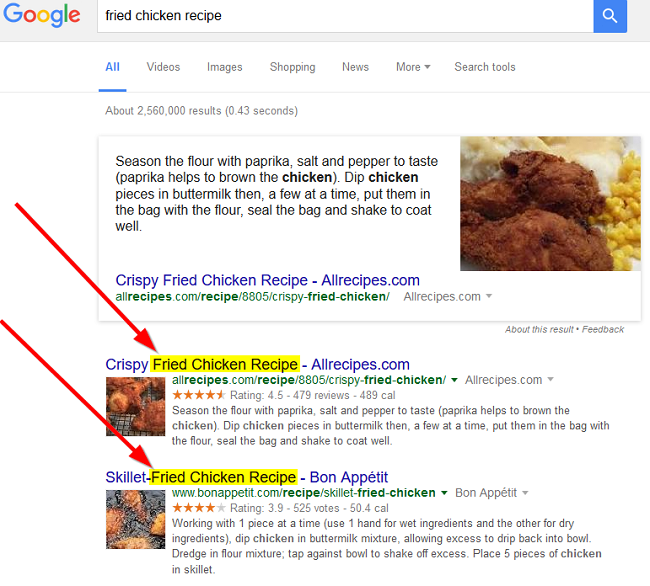
Google is hiding keyword data. There’s nothing we can do about it. But, that doesn’t mean you can’t know when the keywords your web pages are showing up for are increasing, or decreasing.
I’m a big fan of Ahrefs, a powerful tool I use to track my keywords.
Ahrefs has a nice feature called Site Explorer which I like to use to see how many keywords a particular web page is ranking for.
For example, I took this Moz’s page about search engine ranking factors and put its web address into Ahrefs’ Site Explorer.
Ahrefs tells me that this page is currently ranking for 2,600 keywords on organic search which sounds good.

As you can see above, this article from Moz ranks for a lot of keywords and receives organic traffic of 2,000 visits from those keywords in the last month.
If the keywords your website is ranking for are increasing, it shows your site is getting stronger on search engines.
The more keywords a web page can rank for, the harder it’ll be for a competitor to knock it out of the organic search.
If your site is ranking for more keywords, it shows your SEO campaign is heading in the right direction.
5. An Increase In Ranking Positions In Organic Search
If you’re not ranking on the first pages of search engines for your target keywords, you won’t get the traffic your site deserves.
Ranking positions are one of the most important metrics you should be tracking to determine if your SEO campaign is working.
Ranking #1 for a high-traffic non-branded keyword could increase your revenue by over 30%.
According to a study conducted by Chitika, the #1 listing on Google’s organic search results receives 33% of the traffic.
The #2 listing receives 18% of the traffic, and the traffic only degrades from there:
You want to ensure that your web pages are ranking between #1 to #3 for their target keywords before you can consider your SEO campaign a success.
It’ll definitely be tough to crack the #1 position for some of your keywords, but it matters a lot if you’re really serious about increasing your revenue.
Many people are hardly ranking on the top 3 for most of their keywords, then you’ll hear them complaining that SEO is not working, or isn’t worth the investment.
If your web pages are still buried deep down on organic search results for your target keywords, it will be wrong to judge your investment in SEO at this time.
Do all it takes to rank on the first pages and let’s see if SEO is really worth the investment.
I use Google Search Console to track which of my web pages are ranking on the first pages of Google for their keywords.
Inside your Google Search Console dashboard, click on “Search Traffic.”
Then click “Search Analytics.”
You’ll see something like this where you can track the ranking positions for each keyword in Google search results.
6. An Increase In The Number Of Pages Visited
What’s happening on your website is also an integral part of your SEO campaign.
Many people focus too much on the external factors that affect rankings and neglect the internal factors. This is wrong.
Ignoring those internal factors could be hurting your SEO campaign when you expect it to be improving.
If search users visit your pages and leave, that’s not a good signal you want to send to search engines.
You have to make sure your visitors are not only visiting your pages from search engines, but they are also clicking through to other pages on your website. This sends a positive signal to search engines. It tells them that your content is meeting their user’s expectations.
One important metric you should be paying attention to is the number of pages per visit.
Google Analytics will give you this important data.
Inside the Google Analytics dashboard, click “Audience” then “Overview.”
Take a look at Pages/Sessions:
An increasing “pages per visit” will surely have a positive impact on your revenue. It’s also a sign that your SEO campaign is producing fruitful results.
7. An Increase In Visit Duration
The amount of time visitors spend on your website is another indicator of whether your SEO is successful.
Your site might be receiving a high number of visits, but those visitors are useless unless they spend a good amount of time on your website.
There’s no industry benchmark for the number of times visitors should spend on your web pages.
You can only judge using the contents on your web pages.
For example, if the contents of your web pages are thin, then you shouldn’t expect visitors to stay very long on your website.
You should put more interesting content on your website to keep visitors on your web pages for a very long time.
If people are spending more time on your web pages, then you can expect them to become customers.
It would be difficult to convert a visitor who had only spent less than 20 seconds on your website.
You stand a better chance of converting a visitor who had spent 4 to 30 minutes on your website. You can even expect such visitor to tell their friends about your website.
The more time people spend on your website, the more they’re likely to buy your product.
Inside your Google Analytics dashboard, click “Behavior,” then click “All Pages.”
You’ll see the URLs of every page on your website.
Then click on the page you want to track.
After clicking on the page, use the “Secondary dimension” to track the time duration of traffic from each source.
This is where you’ll see the average time duration of traffic from each search engine (Google, Bing, Yahoo! etc).
Here are the steps:
Step 1: Click “Advanced.”
Step 2: Click “Acquisition” then click “Source.”
You should have a list of referrals that are sending traffic to that page.
What you want to do is look at the time duration of various search engines’ traffic to your site.
You should expect your revenue to increase if this metric is high.
8. Low Bounce Rate
Bounce rate is another important metric you should watch before you measure your actual ROI.
If your bounce rate is high, then your SEO campaign hasn’t done a good job.
Many people commit the mistake of measuring their ROI before the bounce rate, which I believe is a big marketing mistake.
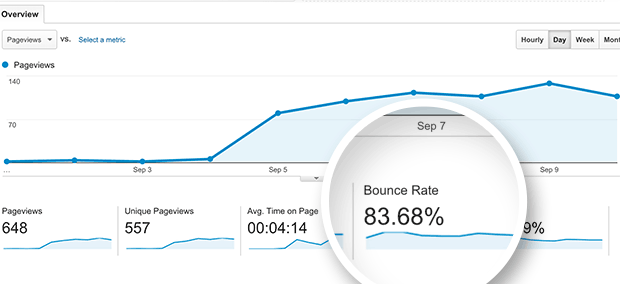
A high bounce rate is another sign that shows visitors are not really happy with the contents on your website.
Don’t expect to convert visitors into customers when most of them are quickly bouncing off your pages.
Getting your site’s bounce rate is easy in Google Analytics:
Click on “Audience,” then “Overview.”
You can also drill down to find the bounce rate across user types, individual pages, etc.
9. An Increase In Inbound Links
Inbound links are the lifeblood of SEO.
Links serve as votes for your website.
The more votes your website gets, the stronger it will perform on search engines.
Your SEO campaign should be driving in links. This is very important.
If your SEO campaign isn’t driving new authority links to your website, then you can’t completely call it a success even if it increases the bottom line.
A web page without many inbound links can easily be knocked out of the first page of Google at any time (that is if it’s ranking there at the moment).
The only way to solidify and protect your rankings is to ensure that your pages are gaining new backlinks.
Without that, a competitor who is willing to gain more high-quality backlinks can easily overtake you in search engine results for your target keywords.
Pay attention to the number of those new links as it protects your business future income.
Ahrefs is my favorite link research tool.
For example, this Moz page currently ranks on the first page of Google for the keyword “SEO tools.”
When I put its web address into Ahrefs, it showed that this page gained 16,000 new backlinks from 156 domains in the previous month.
Despite this Moz page ranking on the first page for its target keyword, you can see that the page continues to gain more links to keep it on that first page.
Without those new links, this page can easily be knocked out of Google’s first page for “SEO tools.”
Always keep this statement in mind:
Getting to the first page of Google is hard. Maintaining that ranking position is even harder.
Your competitors are always building more links in order to overtake you on search engine results. The only way to stay ahead of them is to continue gaining new authority backlinks.
10. An Increase In Conversion Rate
Conversion rate is the percentage of visitors arriving at your website through search engine results who perform your desired action, for example, buy a product or service, contact you, or any other website goal.
Conversion rate is the ultimate measure of your SEO campaign success.
The higher your conversion rate, the more successful your SEO campaign is.
There are different ways you can track conversion.
You can track conversion based on when a visitor fills a form, visited a page, or contact a live representative right there on your website.
Google Analytics allows you to track your site’s conversion rate.
All you need to do is set-up your conversion as destination goals in Google Analytics.
To set up a destination goal, simply click on “Admin” located at the top of your Google Analytics dashboard.
The next thing you have to do is click on “Goals” which is underneath the “All Web Site Data” column.
Click on “New Goal” to set-up your conversion trigger.
As you’ll see on this page, there are different kinds of conversion goals to choose from.
After setting-up your conversion goals, you’ll be able to see it inside your Google Analytics dashboard.
Just click “Conversions,” then “Goals.”
Here’s how it looks like when your site visitors start hitting your conversion goals:
![]()
If conversions are increasing on your website, it shows your SEO campaign is doing a great job.
11. An Increase In Revenue
Revenue is the most important metric.
It’s more important than conversion and every metric that has been mentioned on this page.
But most people often jump straight to measuring their SEO campaign in actual dollars without paying attention to other metrics given on this page.
I recommend you pay attention to all the above metrics before you think about revenue.
Sometimes, your SEO campaign might not even be achieving the right results for you to even consider it a success.
It’s after your SEO campaign is successful should you consider measuring its actual return on investment.
For example, let’s say your SEO goal is to get 50,000 monthly visitors within the next 6 months.
Let’s assume your SEO goal was achieved within that time-frame, and it looks like the ROI doesn’t justify the investment.
What you may not know is that those 50,000 visitors might not even be relevant to your business. Those visits may be coming from unrelated keywords that are bad for your site’s conversion goals.
So, it’s bad to judge your SEO investment at this point because the visitors aren’t relevant.
But if the visitors had been relevant to your business, then it’ll be wise to judge.
So measuring your SEO ROI without considering the first 10 metrics given on this page is totally wrong.
Here’s how to measure your SEO ROI:
Actual SEO ROI= (Total E-commerce revenue through SEO – Cost of running the SEO campaign).
To be honest it’s difficult to get the actual ROI of your SEO campaign.
Why?
If you run a physical store, for example, some search users may land on your site and decide not to buy your product there (or hit any of your SEO conversion goals). They may rather visit your physical store and buy the product.
Such sale may not be recorded as an SEO conversion when it’s, in fact, an SEO conversion.
This is also the case when a search visitor decides to visit your site directly at a later convenient time.
Such visitors would be recorded as direct visitors when in fact they learned about your site through SEO.
So, it’s hard to track your SEO ROI.
But you should expect a great SEO campaign to have an overall positive impact on your brand (assuming you also have a great product or service people want to buy).
Conclusion
To further improve your SEO ROI, you need to collect visitors’ email addresses on your website. And how do you do that? Use OmniKick. OmniKick is a powerful popup tool for collecting email addresses. It’s free to get started today.
